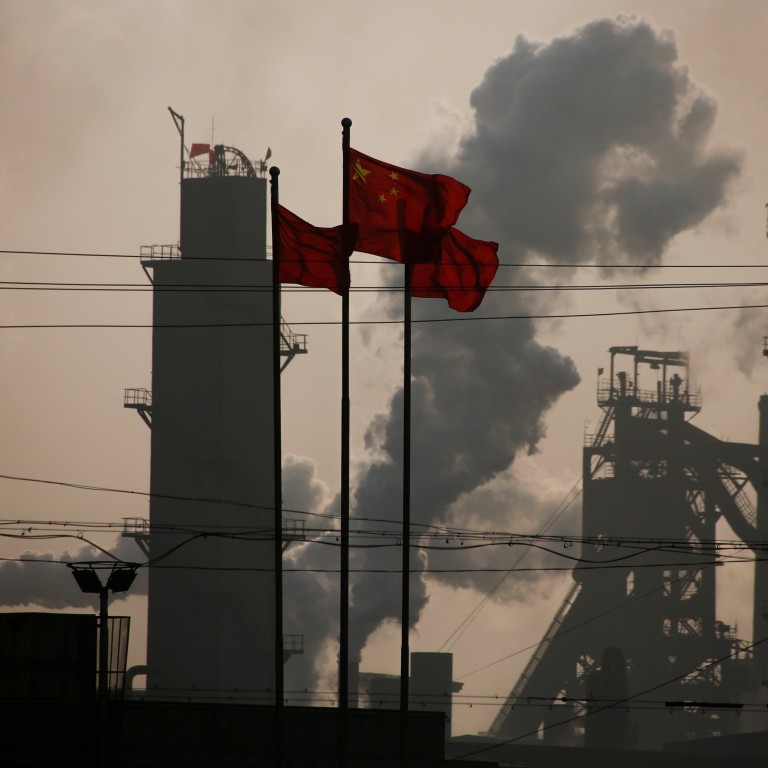
Are China’s provinces doing their bit to help hit national climate change goals?
- China has pledged to reach peak emissions by 2030 and become carbon neutral by 2060 but many local governments have yet to spell out what they will do
- Areas whose economies rely on heavy industry or coal face a particular challenge in making a rapid transformation
But few provinces have yet to produce detailed plans outlining how they will help the country reach these goals.
Other parts of the country have already hit peak emissions and their challenge is whether they can achieve carbon neutrality more quickly.
Here is a rundown of the situation in some of the most important parts of the country.
Hebei
The northern province which surrounds the capital Beijing aims to keep pace with the national target of reaching peak emissions before 2030.
China sets sights on coal, petroleum and waste industries to cut methane
But as the country’s top steelmaking province, producing more crude steel than India, the world’s second-largest steelmaking country in 2020, fossil fuels play a key role in its economy.
Adding to the challenge, other high-energy consumption and high-emission industries such as coal, cement, coke and glass production are also important and have helped to make it the country’s second-biggest polluter.
But over the past six years it has started to reduce its coal and steel capacity. Annual steel production capacity dropped from a peak of 320 million tonnes in 2011 to less than 200 million tonnes in 2020, according to provincial newspaper Hebei Daily.
An action plan published by the provincial government earlier this month aims to increase the amount of energy generated from non-fossil fuels from 7 per cent in 2020 to more than 19 per cent by 2030.
The plan says the province must curb the “blind development” of high-energy consumption and high-emission industries, boost energy efficiency and cut coal consumption.
It will also set up an evaluation system and officials who fail to meet targets will be held accountable.
Inner Mongolia
Inner Mongolia is China’s second-largest coal producer after its neighbour Shanxi. It produced over one billion tonnes of coal in 2020, accounting for more than a quarter of the national total.
China’s clean fuel policies to make green hydrogen cheaper by 2030
Like other resource-rich areas it faces one of the biggest challenges in reducing emissions.
State-run magazine China News Weekly has reported that the region hopes to reach peak emissions by 2030, although it may be hard to carry out the necessary changes within such a short time frame.
Yangtze River Delta
The region, which covers the provinces of Jiangsu, Anhui and Zhejiang, as well as Shanghai, is one of the most developed areas in China and critical for the country’s overall plans.

Shanghai pledged last year that it would reach peak carbon emissions by 2025 but Jiangsu and Zhejiang have yet to release their plans.
Jiangsu, China’s third-largest province in terms of carbon emissions, has vowed to cut coal consumption and expand the use of non-fossil energy through to 2025.
Meanwhile Zhejiang has released no targets and is instead encouraging cities and districts with low-carbon sources to reach peak emissions as quickly as possible.
China’s power sector could hit peak emissions by 2025, study finds
The region contains one ecological demonstration zone, which covers parts of Shanghai, Jiangsu and Zhejiang and aims to hit peak carbon emissions by 2025.
Guangdong
The southern economic powerhouse is one of the few provinces to have vowed to hit peak carbon emissions by 2025.
It has also announced plans to explore zero-carbon demonstration projects in the industrial sector, promote the development of carbon capture and storage technologies, and expand carbon emissions trading.
Beijing
Beijing may be the only city in China that reached peak carbon emissions a decade ago.
According to Communist Party mouthpiece People’s Daily, the capital’s emissions have been falling since the introduction of a clean air plan in 2013.
The district of Yanqing, which will be responsible for hosting alpine skiing and bobsledding events at the Winter Olympics, aims to be the first district in Beijing to become carbon neutral.
According to a report in The Beijing News it aims to do so by 2025 through the use of clean energy.




